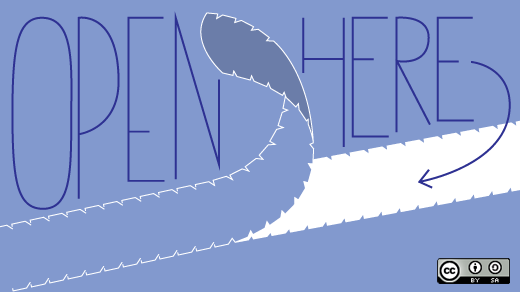This article details the circumstances behind my switch away from proprietary operating systems and my switch to Linux. Like many, I switched out of frustration with other operating systems and not directly because of Linux's open source model. I developed my passion for that after the switch was made.
The breaking point
It was August 18, 2011. I had just completed the umpteenth restoration from factory of Windows 7 on my HP laptop. I had just installed the open source screen reader I was using at the time, NVDA, as well as some of the applications I used on a daily basis, such as the Mush-Z MUSHClient. The entire time the factory restore was progressing, I was fuming. I had just restored a month ago. What in the world was I doing to make Windows break so often?
I had tried out the latest Ubuntu Linux using its Wubi tool a few weeks prior. I was intrigued with Linux—I had heard it was accessible, but didn't know quite enough to switch. I began looking around the web for information on Linux. I found posts detailing how reliable Linux was, how resistent to failure it was. That sounded really good to me. So, I typed "free blind Linux distro" into Google and hit return. The first result was for Vinux, a specialized version of Ubuntu with screen reader and braille enabled by default, available in a live edition, whatever that was. I downloaded it and burned it to a DVD to try it out.
I'll never forget that first experience. I put the DVD into my laptop's disk drive and restarted. An unfamiliar screen came up. I waited. "Welcome to Orca." Huh? Remember, I was used to Windows, which cannot be run live (at least not in its official distribution). You boot directly into the installer and must install directly from there. If you happen to be blind, that's not an easy thing to do. But this booted right into the desktop. I was able to explore the system, launch programs, use Firefox, etc., and the whole time I was running off of a DVD. And it talked. I was blown away.
Within five minutes I had hit the "Install Vinux 3.2" desktop icon, and run through the installer, erasing Windows off my hard drive. Perhaps I should've installed alongside instead—I went on to break my Linux install a good dozen or so times while I experimented—but hindsight is always something I've lacked. This was amazing. A fully accessible installer. I had always heard Linux was rather hard on newcomers, requiring command line know-how to get it going, but this was easier than installing Windows, and a lot more fun too. I think the installation took about half an hour. When it was done I got a nice little "I'm done" prompt asking me if I wanted to reboot. I hit the "Yes" button, and off I went.
Learning Linux
It wasn't all smooth sailing. In fact, it was far from it. It took a while for me to unlearn some of the skills most Windows users rely on, in particular going to websites to install software and drivers. I have always been fortunate not to have any of the hardware woes that plague some unfortunate newcomers, so I have never seen the harder side of Linux. Has every single device worked for me out of the box? No, but a good 95% have with zero configuration. The only two devices I absolutely could not get to work with Linux were an Apple USB modem I tried from my mom's Mac and a Netgear wireless adaptor that used some kind of broadcom chip and identified itself to the system as "vendor specific gid and pid." In plain English, that means it told the system, "I need a special driver from the company." If instead it had identified to the system as a network adaptor, it probably would've worked out of the box.
I have broken my Linux install time and time again, usually by trying to install newer versions of the screen reader, Orca, than the Linux distro provided. I have since figured out how to do this safely, and I now use a distribution that doesn't make installing bleeding edge software quite so hard. My advice: If you're on Ubuntu, it's probably a good idea to stick with the versions of Orca that comes with it or that you can get from a personal package archive (PPA). You can of course build from source, but if Orca ever requires newer versions of packages than Ubuntu has, you can quickly run into trouble (and the errors aren't that helpful).
But I'm not worried.
If Linux ever breaks, I simply boot up my faithful DVD and reinstall. It is accessible and painless, and I no longer need sighted assistance to install and maintain my own system.
Linux to open source
After I grew comfortable with Linux, I started hearing about this "open source" thing. I had encountered open source software before on Windows. I began reading up on both the Free Software Foundation's views and the wider Linux community's views. My personal opinion falls somewhere in the middle, and I eventually grew passionate about open source. This is why I'm committed to making Linux as accessible an operating system as it can be as well as getting as many people to try and possibly stick with Linux as I can.
Thanks all of you who make Linux possible and who work hard every day to keep it running. I'm one happy Linux user.






5 Comments